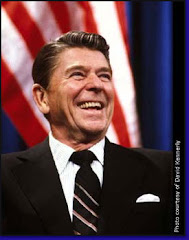Be it Resolved!
by Steve
Fair
New Years often begins with the making of
resolutions. New Years resolutions are
not a modern invention. They have been
around since ancient times. The Romans
began each year by making promises to the god Janus, for whom the month of
January is named. The most popular
resolutions people make include eating healthier, exercising, and resolving to lose
weight or to quit smoking, working toward a better education, volunteering
more, spending more time with family, and getting out of debt. How successful are most of us at fulfilling New
Year’s resolutions?
According to a 2007 study by Richard
Wiseman from the University
of Bristol involving
3,000 people, 88% of those who set New Year resolutions fail. That is in spite of the fact that 52% of the
study's participants were confident of success at the beginning.
According to the University of Scranton, Journal of Clinical
Psychology, “45% of Americans usually
make resolutions and 37% never make resolutions. Those in their twenties are three times more
likely to be successful at achieving their resolution goal than those in their
fifties.”
While most people resolve to do more in
the New Year, Princeton psychologist Edlar
Shafir and Harvard economist Senhil Mullainathan suggest the best strategy is to
resolve to do less, not more. They argue
when busy people get busier; it leads to ignored deadlines, disorganization and
a vicious cycle of falling further and further behind. They do not discount the importance of a person
staying busy and productive, but they caution against what they describe as “tunneling”:
a laser-like focus on the tasks immediately at hand, which often results in a
disregard for the bigger picture. They believe focusing on a deadline at the
expense of long-term happiness is counter-productive.
In 2013, Atlantic magazine published
several New Year’s resolution lists of celebrities. They included a list of 17 resolutions by
Jonathan Swift, the author of Gulliver’s Travels, and a list of 33 by Oklahoman
Woody Guthrie. Guthrie’s list included
several goals revealing his socialist political leanings, but also included one
about washing his teeth (if he had any) and waking up to fight. They also included a handwritten list of
Marilyn Monroe’s resolutions.
In 1722, a nineteen year old boy named
Jonathan Edwards, who was studying for ministry, wrote out his New Year’s
resolutions. Edwards was the interim
pastor at a small Presbyterian church in New
York City. He
wrote as the introduction to the resolutions: “Being sensible that I am unable to do anything without God’s help, I
do humbly entreat him by his grace to enable me to keep these Resolutions, so
far as they are agreeable to his will, for Christ’s sake. Remember to read over
these Resolutions once a week.” Edward’s list had seventy resolutions that he
used to guide him throughout his life. He read them weekly and resolved to keep
those resolutions. Edwards ultimately became
President of Princeton University and is famous for preaching, “Sinners in the Hands of an Angry God.” The wisdom and insight of Edward's resolutions are
still profitable today. To see a
complete list of Edward’s resolutions, go to: http://www.desiringgod.org/articles/the-resolutions-of-jonathan-edwards.
New Year’s resolutions most often involve
self-improvement. They are rarely a
resolution to improve one’s spiritual condition or relationship with their
fellow man. Edward’s resolutions were
basically ones that focused on his desire to please his Creator, not in
becoming more satisfied with himself.
As we enter into 2015, may each American,
no matter their political Party affiliation, resolve to understand that we,
individually or collectively, can do nothing without God’s help. No amount of well intentioned resolutions,
effective debating, positioning, coalition building or proclaiming of the truth
will be effective without His grace. If
we understand that one simple principle in 2015, perhaps we will see God have
mercy on America.




No comments:
Post a Comment